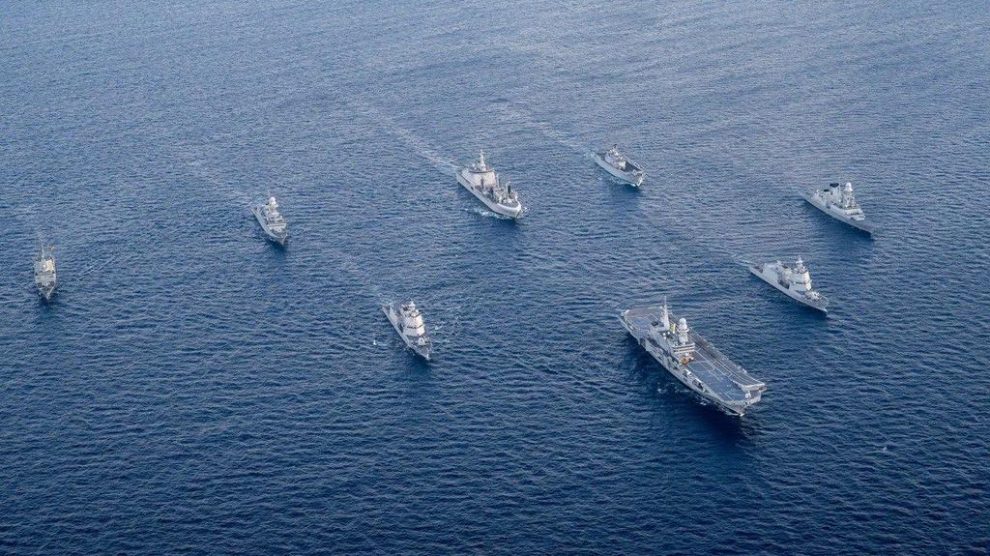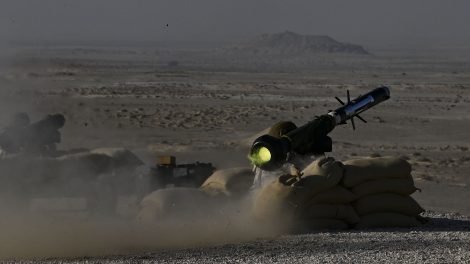Decoding the news. “Mare Aperto 25,” the largest annual maritime defence exercise in the central Mediterranean, has kicked off with 120 military assets, 6,000 personnel from eight NATO countries, and observers from 21 foreign navies.
- The operation, led by the Italian Navy, underscores NATO’s growing focus on maritime readiness amid increasing instability across multiple geopolitical fronts—from North Africa to the Indo-Mediterranean.
- The three-week training combines ships, submarines, aircraft, helicopters, and unmanned aerial, surface, and underwater vehicles in a full-spectrum training environment.
- The exercise also reinforces Italy’s role as a central maritime hub within the alliance.
- Italy’s Army, Air Force, Carabinieri, Coast Guard, and Guardia di Finanza are also integrated into the drills’ activities.
Spotlight on the Nave Trieste. Among the most significant assets deployed is the landing helicopter dock (LHD) Trieste, the flagship of the Italian Navy’s amphibious capabilities.
- Commissioned in 2022, the Trieste is central in projecting force ashore and coordinating joint operations.
- During Mare Aperto 25, the vessel acts as a mobile command centre, enabling the integration of air, sea, and land components in real time—a key feature in modern expeditionary warfare.
- The Trieste will operate alongside the Amphibious Task Group (ATG), a core component of the Navy’s Expeditionary Task Force (ETF).
- The ATG includes three key amphibious assault ships—San Giusto, San Giorgio, and San Marco—which provide additional lift, logistics, and command capabilities for projecting power from sea to shore.
Below the surface. The drills also put a spotlight on next-generation underwater warfare.
- Alongside conventional submarines, the Italian Navy deploys unmanned underwater vehicles (UUVs) for surveillance, mine detection, and anti-submarine operations.
- These technologies are increasingly critical as NATO navies prepare for conflicts in which seabed infrastructure—including cables and pipelines—may become strategic targets.
Medical readiness. In addition to this year’s exercise, an Advanced Medical Post will be established in the port of Civitavecchia to manage a simulated chemical contamination emergency.
- Participating forces simulate high-intensity, multi-domain operations with a special emphasis on CBRN (chemical, biological, radiological, and nuclear) threat response at sea and along coastal zones.
What they’re saying. “This is a fundamental test to assess interoperability and the ability to operate in increasingly complex and dynamic scenarios,” said Admiral Aurelio De Carolis, Commander in Chief of the Italian Naval Squadron.
- This year’s edition, he added, “aims to strengthen operational readiness further and force cohesion to ensure maritime security and protect national interests.”
What we’re watching. As NATO shifts strategic attention toward the Mediterranean, “Mare Aperto 25” doubles as a demonstration of alliance cohesion and operational depth.
- With a sharpened focus on multi-domain integration, from underwater warfare to medical readiness, the drill signals a broader transformation in how maritime power is projected and protected.
(Photo: X, @ItalianNavy)





